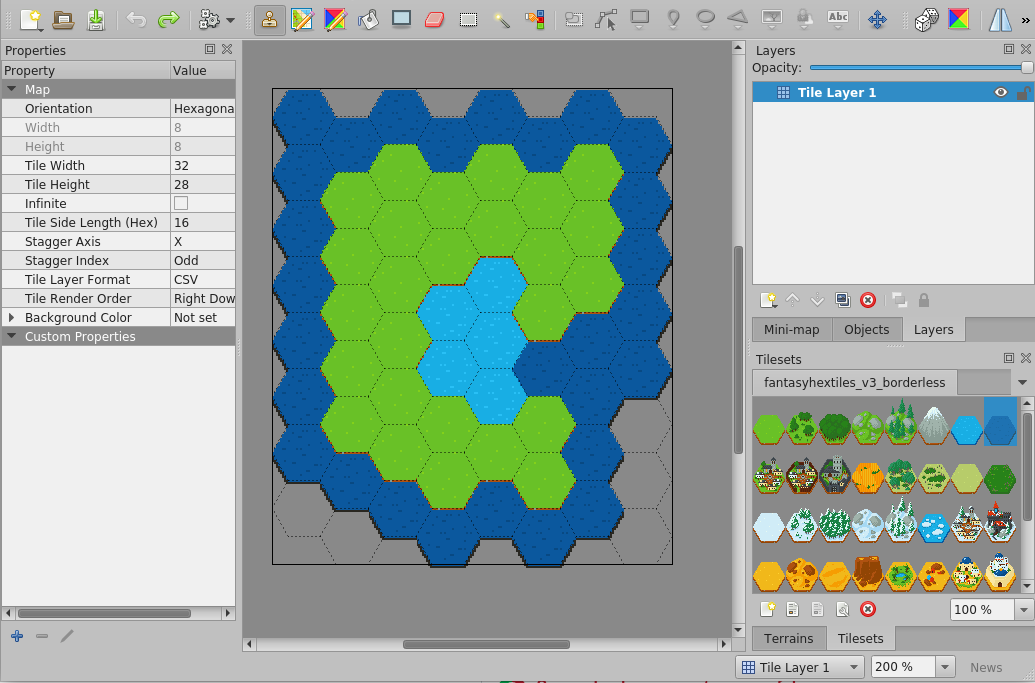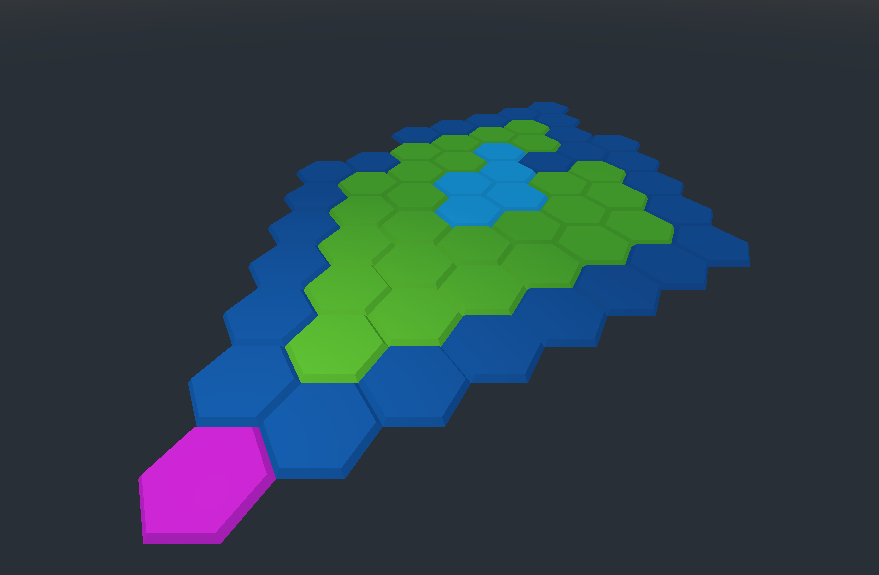So I managed to 'fix' it somewhat by changing this line:
func obj_to_coords(val):
# Returns suitable cube coordinates for the given object
# The given object can an be one of:
# * Vector3 of standard cube coords;
# * Vector2 of axial coords;
# * HexCell instance
# Any other type of value will return null
#
# NB that offset coords are NOT supported, as they are
# indistinguishable from axial coords.
if typeof(val) == TYPE_VECTOR3:
return val
elif typeof(val) == TYPE_VECTOR2:
return axial_to_cube_coords(val) # <- this line
elif typeof(val) == TYPE_OBJECT and val.has_method("get_cube_coords"):
return val.get_cube_coords()
# Fall through to nothing
returnto this:
return offset_to_cube_coords(val)
And wrote a func based off the redblob site to get an offset (oddq) coord:
func offset_to_cube_coords(val):
# Sets position from a Vector2 of offset coordinates
var x = int(val.x)
var z = int(val.y) - (x - (x & 1)) / 2
return Vector3(x, -x-z, z)This results in the hex grid rendering correctly based off of offset_coords:

Getting close!
Unfortunately, this causes the get_hex_at method to kind of give me skewed results, it seems like it's attempting to give me a hex based on an axial lookup instead of an offset ie, moving the mouse cursor right gives me a hex lower and lower than it should be the further away from 0,0 I am.
The code:
var plane_coords = self.transform.affine_inverse() * click_position
plane_coords = Vector2(plane_coords.x, plane_coords.z)
var hex_pos = HexGrid.get_hex_at(plane_coords).offset_coordsAny ideas?
Hi there, I've been playing around with this plugin. Recently I wrote a json importer that takes a hexmap generated from the application Tiled (https://www.mapeditor.org/) and imports it into godot with some very minor shaders.
My issue lies with how:
Tiled, unfortunately, only allows the origin to be in the top-left and
+y => S and +x => E.I created a map that looks like this in Tiled:
Unfortunately when I render it using
get_hex_center(Vector2(x,y))I get the map quite skewed:I'm wondering if there is a method to adjust the coordinate system to align closer to something like Tiled.
My rendering code on load: